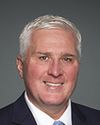Certainly.
The way the tool works is that a project, whether a proposed project or a piece of infrastructure currently in place, is assessed in terms of how it is operating in our current climate. For example, we look at rain, wind speeds, and so on. Then, we look at what will change in terms of the climate data. One of your colleagues referred to the importance of data earlier. We ask how the weather is going to be changing. Then, we look at the vulnerabilities related to that.
I'll use the Finch Avenue washout as an example that many of you might be familiar with. Finch Avenue was a very important arterial in the city of Toronto that had many unknown vulnerabilities. It had culverts that were not being properly maintained. In addition to being a road that many people used, it was also the location of other key aspects of infrastructure, such as cable, telephone, electricity, and gas. So when the Finch Avenue washout occurred, the city was left with many challenges from the users of the arterial and also astronomical impacts on their economy and the competitive advantage of the city.
If that type of an assessment is done in advance or undertaken on the key infrastructure that a municipality or region depends on, it helps to anticipate where the weaknesses are. For example, in the case of a road like Finch, it was the culverts; it was the importance of cleaning the culverts but also the importance of building the right culvert.
We'll go back to the railway now. Doing this kind of an assessment would identify the vulnerabilities associated with a particular railway. Mr. Hardie talked about the railway, the erosion, the washouts, and the rock falls. All of those are impacted if the weather is changing. Doing this kind of an assessment can assist in preventing and reducing the risks associated with not having the infrastructure at all.




